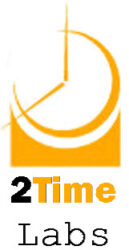 As I mentioned in a prior post, there is a great deal that I enjoyed from the book “Bit Literacy” by Mark Hurst. In particular, the idea of returning to “empty” struck a chord with me.
As I mentioned in a prior post, there is a great deal that I enjoyed from the book “Bit Literacy” by Mark Hurst. In particular, the idea of returning to “empty” struck a chord with me.
If you are a frequent reader of this website you might imagine why, because I have described “Emptying” as one of the fundamentals of time management, and I have repeatedly mentioned the importance of the practice.
Even the sample chapter from a book I am working on centered on learning how to Empty properly.
What Bit Literacy, has done however, is to describe in some detail the actual goal of Emptying, which is to have an experience of being “empty.”
This is not something I have written much about, but it IS something I have experienced when my time management system is running smoothly.
It turns out that the feeling of being empty turns out to be a critical accomplishment.
Hurst reports that people who change their habits and are able to arrive at a Zero Inbox at least once each day find the experience a bit disconcerting. We are used to looking at email in our inbox over and over again, jumping from one item to another without taking a concrete action that results in its removal from that particular folder.
Most of us are intimately acquainted with the feeling of overwhelm that comes from hundreds and even thousands of items sitting in our email inboxes, each of them calling at us to be read, or actioned in some way.
We often find ourselves responding to whatever email is sent to us, and working on whatever our Inbox “tells us” to work on. This reactive mode is what we are used to, and it’s the reason that we glance at our inboxes over and over gain, looking to see what the next hot item might be.
When we learn to manage a Zero Inbox, however, there are several moments per week or per day when we are staying at an empty space where all the Inbox email used to be.
I can tell you from personal experience that it’s a strange feeling. It’s a little like that strange space that one enters after completing a final exam, giving a speech or getting married.
It’s a space filled with a “now what?” kind of question.
This empty space is the one that allows for the best kind of creativity – the kind that comes from nothing, a blank canvas, a kind of quiet in which the best decisions are made.
This flies in the face of the addictive sense of urgency that some of us cultivate. In Bit Literacy, the author paints the picture of the “Busy Man” who moves from one activity to another, never stopping for a breath, using the continuous busyness as confirmation that, yes, they are important.
They often develop the awful habit of jumping from one task to another, never really finishing what they start. They also will try to multi-task, interrupting their conversations to read email on their Blackberries, always busy paying attention to the thing they’re not doing.
This idea of getting to empty flies in the face of all that busyness.
In other places in this blog I talk about the importance of the flow state, and of creating the kind of single-minded focus on a single activity that is essential for high performance. I have mentioned that one of the goals of the 2Time approach is to produce regular and frequent experiences of being in this state.
Reading Bit Literacy has made me think that I should add the momentary experience of being “empty” to the list of 2Time goals, given how hard it is to achieve, but important an indicator it is of top quality time management.
Furthermore, perhaps there is a way of describing the higher belts in terms of these states — flow and empty — and the degree to which they are accomplished Following this logic, a Green Belt visits these states frequently, while a White Belt either doesn’t know that they exist, or has never had the experience.
This seems to make sense, and is a practical way to accomplish a powerful kind of inner peace.
[email_link]









